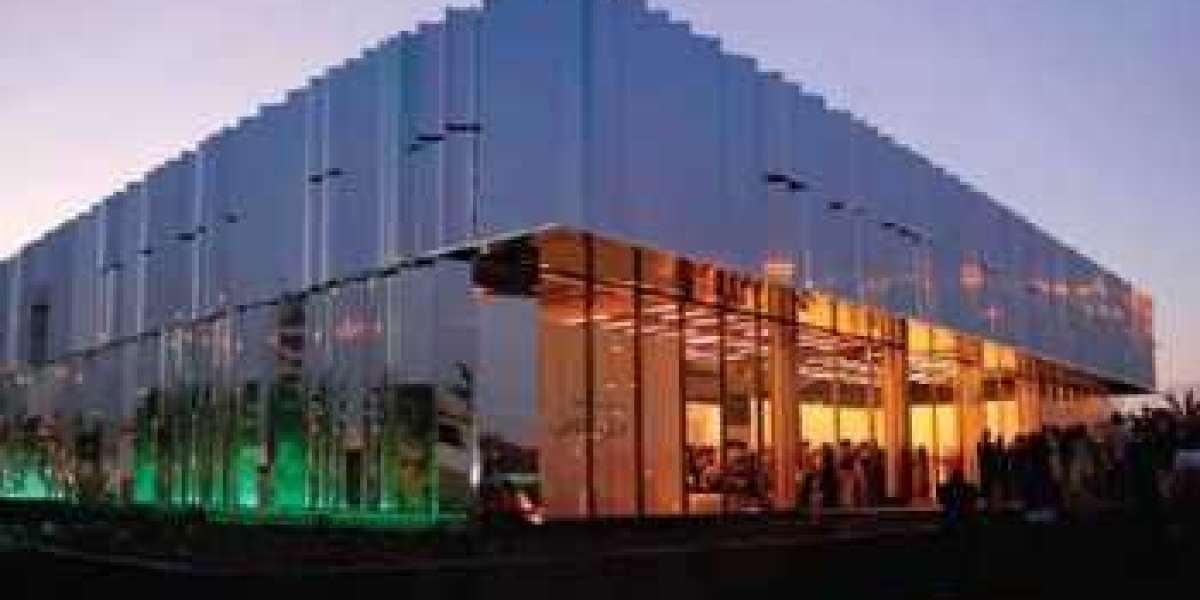Introduction to Aluminum Composite Panels (ACP)
Aluminum Composite Panels (ACP)have revolutionized the world of architecture and design with their unparalleled versatility. From sleek modern facades to eye-catching signage, ACPs offer limitless possibilities for creating stunning visual effects. But their appeal goes beyond aesthetics - these panels also boast a range of advantages that make them a popular choice among designers and builders alike. In this blog post, we will explore the countless applications of ACPs in architecture and design, as well as delve into their durability, sustainability, and maintenance requirements. So join us on this journey through the world of aluminum composite panels and discover why WILLSTRONG is leading the way in bringing innovation and functionality to your projects!
The Advantages of ACPs
Aluminum Composite Panels (ACPs) have gained immense popularity in the world of architecture and design, thanks to their numerous advantages. One of the biggest advantages of ACPs is their versatility. These panels offer endless possibilities when it comes to creating visually stunning designs.
First and foremost, ACPs are lightweight yet sturdy, making them easy to handle and install. This makes them a preferred choice for architects and designers who seek both practicality and aesthetics in their projects. Additionally, ACPs come in a wide range of colors, textures, and finishes, allowing for limitless creative options.
Another advantage of using ACPs is their excellent weather resistance. These panels can withstand extreme temperatures, high humidity levels, UV radiation, and even heavy rainfall without losing their structural integrity or fading in color. This durability ensures that buildings clad with ACPs maintain their attractive appearance for years to come.
Furthermore, ACPs are highly customizable. They can be easily cut into different shapes and sizes according to specific design requirements. Moreover, they can also be bent or curved to create unique architectural features such as arches or wave-like structures.
In addition to being aesthetically pleasing and flexible in design applications, ACPs also offer functional benefits such as thermal insulation properties. The sandwich structure comprising aluminum sheets bonded with a polyethylene core provides excellent heat insulation capabilities while enhancing energy efficiency.
Moreover,a key advantage of using ACPs lies in their low maintenance requirements. They do not require frequent repainting or refinishing like traditional materials such as wood or concrete. In fact,simply cleaning the surface periodically with mild soap water is sufficient enough to maintain its original shine. Also,the non-porous nature of aluminum prevents accumulation dirt,dust,and grime thereby reducing overall maintenance costs. To sum up,it's clear that Aluminum Composite Panels (ACPs) provide several advantages over conventional building materials. They offer unlimited design possibilities,durability,resistance against weather elements,thermal insulation,and low maintenance requirements.
Applications of ACPs in Architecture and Design
Aluminum Composite Panels (ACPs) have gained significant popularity in the field of architecture and design due to their versatility and aesthetic appeal. These panels can be used in various applications, ranging from commercial buildings to residential projects.
One common application of ACPs is in the exterior cladding of buildings. The lightweight nature of these panels makes them easy to install, while their durability ensures long-lasting protection against weather conditions. Whether it's a sleek modern design or a more traditional look, ACPs offer endless possibilities for creating stunning facades.
In addition to exterior cladding, ACPs are also widely used for interior design purposes. From wall paneling to partition walls, these panels can transform any space into a visually appealing environment. Their flexibility allows designers to experiment with different colors, textures, and finishes to achieve the desired aesthetic effect.
Furthermore, ACPs find extensive use in signage and advertising industries. Due to their excellent flatness and smooth surface finish, they provide an ideal canvas for printing graphics and logos. With vibrant colors that do not fade easily over time, ACP-based signage offers high visibility and adds a professional touch to any business establishment.
Moreover, ACPs are frequently utilized in furniture design as well. They can be shaped into various forms such as tables, cabinets or shelves without compromising on strength or structural integrity. This versatility allows designers to create customized pieces that seamlessly blend with any interior style.
Overall, the applications of Aluminum Composite Panels continue to expand as architects and designers discover new ways to utilize their unique properties. From building exteriors
to interior spaces, these versatile panels bring beauty, functionality, and sustainability to every project. Whether it's enhancing the visual appeal of a structure or adding artistic touches within interiors, ACP has become an indispensable material in contemporary architecture and design.
Durability and Sustainability of ACPs
Durability and sustainability are key factors to consider when choosing building materials, and aluminum composite panels (ACPs) excel in both areas. ACPs are known for their exceptional durability, making them a popular choice for architects and designers looking for long-lasting construction solutions.
One of the primary reasons why ACPs are so durable is because they consist of two layers of aluminum with a polyethylene core sandwiched between them. This unique composition gives ACPs excellent strength and resistance against impact, weathering, and corrosion. Whether it's heavy rain or strong winds, ACPs can withstand the elements without losing their structural integrity.
In addition to their durability, ACPs also offer sustainable benefits. Aluminum is one of the most abundant metals on Earth and can be easily recycled without compromising its quality. By using ACPs in construction projects, we reduce our reliance on virgin materials while minimizing waste generation.
Furthermore, the energy required to recycle aluminum is significantly lower compared to producing new aluminum from scratch. This means that utilizing ACPs not only reduces environmental impact but also saves valuable resources by promoting a circular economy.
Thanks to their durability and sustainability features, ACPs have found applications in various architectural designs around the world. From commercial buildings to residential homes, these versatile panels provide an attractive yet practical solution that meets both aesthetic requirements and functional demands.
Maintenance and Care for ACPs
Proper maintenance and care are essential to ensure the longevity and aesthetic appeal of aluminum composite panels (ACPs). Fortunately, maintaining ACPs is relatively simple. Regular cleaning is the key to keeping them looking their best.
To clean ACPs, start by removing any loose dirt or debris using a soft brush or cloth. Then, mix a mild detergent with water and gently scrub the surface using a soft sponge or non-abrasive brush. Rinse thoroughly with clean water to remove any residue.
Avoid using harsh chemicals or abrasive materials as they can damage the protective coating on the panels. Additionally, never use pressure washers at high pressures as it may cause delamination or dents on the panel surface.
In areas prone to heavy pollution or saltwater exposure, more frequent cleaning may be necessary. It's also advisable to inspect ACPs regularly for any signs of damage such as scratches, chips, or cracks. Promptly repair any damages to prevent further deterioration.
By following these simple maintenance guidelines, you can ensure that your ACPs remain in excellent condition for years to come while preserving their functionality and visual appeal without compromising safety standards!
Conclusion
Aluminum Composite Panels (ACP) have emerged as a versatile and popular choice in the world of architecture and design. Their unique combination of durability, versatility, and aesthetic appeal has made them an attractive option for a wide range of applications.
From sleek modern facades to eye-catching signage, ACPs offer endless possibilities for creative expression. With their lightweight nature, ease of installation, and ability to be customized into various shapes and sizes, these panels can transform any space into a work of art.
The advantages of ACPs go beyond just aesthetics. Their exceptional resistance to weather conditions ensures that they stand the test of time without fading or deteriorating. This not only saves on maintenance costs but also contributes to the sustainability aspect by reducing waste generation over time.
Maintenance is also hassle-free with ACPs requiring minimal care. Regular cleaning with mild soap and water is all it takes to keep them looking fresh and vibrant for years to come.
Aluminum Composite Panels offer immense versatility in both design and functionality. Whether you're looking for an innovative architectural solution or seeking ways to enhance your interior spaces, ACPs are sure to meet your requirements. Embrace their limitless potential today and unlock a whole new world of possibilities in your next project!








